The Honda CT70, also known as the Honda ST70 Dax, belonged to the Honda CT Series group and was popular in the U.S. and Canada in 1970. If you plan to buy an off-road motorcycle that can withstand off-road and on-road terrain, you may want to look into a Honda CT70.
The Honda CT70 provides a maximum peak output power of 5.20 hp (3.8 kW) at 8,000 RPM. Its maximum torque is 0.37 kg-m at 8,000 rpm, or 0.51 kg-m at 7,000 RPM. This dual-purpose motorbike features a single-cylinder 4-stroke engine.
You can go as fast as 70 km/h (43.5 mph) – the CT70’s top speed. There are two generations of the CT70 that became popular: the 4-speed generation and the 3-speed generation.
Read on to learn more about the Honda CT70, its pros and cons, and some tips for maintaining the motorbike in top condition.
About the Honda CT70 Motorcycle
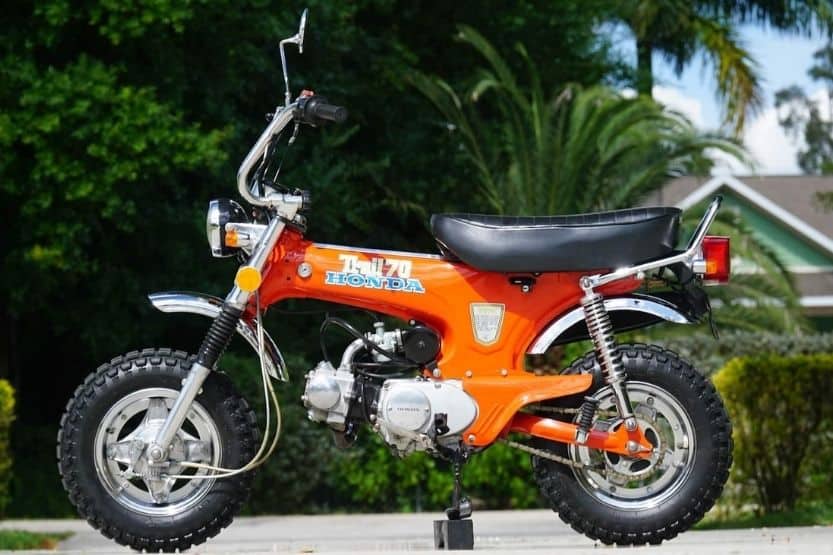
Honda manufactured the CT70 or Honda Trail CT70 from 1969 to 1994. This powerful minibike weighs 69.0 kg (152.12 lb) dry and 75.0 kg (165.35 lb) when wet.
The Honda CT70 has the same 70 ccs, 4-stroke OHC engine as the Honda CL70 and is quite similar to the Honda ATC70’s engine.
You can trace CT70’s (Trail 70) lineage to the Honda Z series (Z50). When Honda succeeded with its Monkey concept, the company introduced another animal minibike as well – the DAX. The DAX featured a T-bone frame that was stout and long, resembling a Dachshund dog.
Hence, the name DAX came about. Honda introduced the DAX Honda ST70Z in 1969. The new minibike was portable but had a larger frame and 72 cc motor. Honda also offered the CT70 model (Trail 70) configured from the DAX lineup to the U.S. market in the same year.
Since the CT series was already popular in the U.S., the company featured the DAX as a CT series. Honda offered the CT70 series in the U.S. from 1960 to 1982 and from 1991 to 1994.
CT70 Revisions
The CT70 had few revisions through the years, but all models shared the 72 cc OHC 4-stroke motor and the DAX T-bone frame.
The revisions include the introduction of the HKO, a 4-speed manual clutch version, in 1970. Another one was the upgrade to a separate headlight and speedometer from the combined speedometer-headlight version.
Honda also introduced K2 with added mirrors and upgraded the headlight ears and rear. It stopped producing the 4-speed model in 1971 too. Eventually, the K3 model came with added turn indicators, with the final K4 model released in 1975.
Honda continued to upgrade the dual-purpose motorcycle by changing the ignition switch, speedometer, and other parts. However, the company stopped selling the CT70 in 1982.
It was only after 1991 that the company reintroduced the Honda CT70. The minibike sported a new look with its redesigned front shocks, white wheel rims, adjusted seat position, and a configured speedometer.
Furthermore, Honda complied with emission control laws by adding an air recovery device. However, the upgraded motorcycle did not fare well in the market, so Honda stopped selling the CT70 in the U.S. in 1994.
Nowadays, the Honda CT70 is one prized item that vintage motorcycle enthusiasts may want to collect.
Are Honda Nighthawks Reliable?
Honda CT70 Specs and Features
Engine
The Honda CT70 offers a simpler single-cylinder piston and a compact, more efficient air cooler. Compared to its multi-cylinder engine counterpart, the CT70 is less complex.
The CT70 provides a four-stroke engine that has dedicated strokes for power, exhaust, and consumption. The engine’s capacity is pegged at 78.1 cc/ 4.4 cu in, with a bore x stroke identified at 47 x 44.1 mm. Its maximum fuel capacity is only 2.5 liters (0. 0.66043 gallons).
Dimensions
This minibike weighs 69.0 kg (152.12 lb) dry and 75.0 kg (165.35 lb). It measures 1,510 mm (59.45 in) long, 960 mm (37.8 in) tall, and 570 mm (22.44 in) wide. Its wheelbase measures 1.035m.
Exterior
The Honda CT70 resembles a Dachshund dog with a classic exterior that makes the minibike appear simpler but elegant. Its pressed-steel T-bone frame is easily distinguishable among all motorcycles.
Also, the folding handlebar lends a classic look to a collector’s item. The seat height blends well with the exterior, standing at 745 mm (29.3 in).
Tires
Each tire features a superb OEM style with a steel silver color. The front tire and rear times have the same measurements 4.00 x 10 (1969 to 1982) or 3.5 x 10 (1991 to 1994).
Drivetrain
The 1969 Honda CT70 features the old technology of 3-speed transmission, making it a genuine vintage collector’s item. The ensuing transmission systems’ gearbox was 4-speed afterward.
It accomplishes this task because the bump’s force will fold its shock-absorber-suspended front link up and then back. Leading link forks appeared heavier but were lighter than telescopic forks.
This feature allows the CT70s to climb over bumps and obstacles without the fork tubes being bent backward.
Suspension
The Honda CT70 utilizes a leading link fork suspension, also called the Earles fork. This suspension type has the incredible ability to climb over obstacles and bumps.
Lighting
The Honda CT70 has a headlight and rear taillight. The headlight is a 6V and 15W combo, and the system is electrical from the headlight to the taillight.
Brakes
The CT70’s front brake expanding mechanism could provide more braking force than a disc brake with an equal diameter. On the other hand, the rear drum brakes generate lower heat.
This expanding system allows the brakes to last longer due to the increased friction contact area. This brake type is also cheaper than the disc brakes.
Ignition
The Honda CT70 utilizes a magneto ignition. The maximum power is 4.5 kW/6.08 hp at 9,000 RPM.
Unique Features
One of the most noticeable features of the Honda CT70 is the “T-Bone” frame distinguishable across the Honda trail models series. Other unique features include the foldable handlebars, bench-style saddle, and thicker-than-average tires.

The CT70 gained fame as an off-road motorcycle that can withstand off-roads without damages to its engine parts and body frame.
Are Honda Nighthawk 750 Reliable?
The below video is an excellent Honda CT70 review, including its specs and features:
Honda CT70 Top Speed
The Honda CT70 can reach a top speed of 70 km/h (43.49 mph). Some riders claimed that their top speed was 93 km/h (58 mph). Nonetheless, Honda has not confirmed these reports.
Honda CT70 Cost
The Honda CT70 price varies, depending on its length of use or value. The original Manufacturer’s Suggested Retail Price (MSRP) was at $395. The topmost value of the CT70 is around $1,300 to $1,800.
The fair value is $570 to $795. The motorcycle is more costly than some of its contemporaries; however, its durability and reliability are unquestionable.
Pros and Cons of the Honda CT70
Pros
1. More Effective Air-Cooling for Its Single-Cylinder Piston
Single-cylinder engines are compact and operate more simply. Hence, air cooling is more effective. This system significantly reduces the weight of engines compared with liquid-cooled ones. The engine’s weight reduction reduces the total weight of the motorcycle, making it more portable.
2. Good Design
The Honda CT70 is compact, weighing only about 143 to 152 pounds. The foldable handlebars and foldable footpegs will allow you to transport the minibike in your car’s trunk. The seat design is adjustable, too, so even your kids could have fun riding it.
3. Excellent for Farm Owners
The CT70 gained popularity in the farm areas in the U.S. This is because of its ability to work well even on off-roads and muddy roads. Riders can quickly learn the basic riding skills to navigate farm roads.
4. Superb Build Quality
Honda guaranteed that you get your money’s worth with the CT70. The CT70 may be a bit more costly than other motorbikes, but Honda ensured that all essential parts are solidly built with high-quality materials. Note that your Honda CT70 will last long with proper maintenance and care.
Cons
Honda CT70 Brake Is Not for Everyone
A less-experienced rider could distort the drum brakes and cause the brake fluid to vaporize. These events happen when the driver brakes heavily, causing an increase in the drum’s diameter due to thermal expansion.
Overheated brake drums will cause brake fluid vaporization. To prevent this from happening, the driver should press the brake pedal even further.
Speed Is Slower
If you want some joy-riding along the highway, the CT70 may not be the best motorbike for you. The CT70 is smaller and, therefore, less stable at increased speeds.
Frequently Asked Questions about the Honda CT70
How Fast Does a Honda Trail 70 Go?
The Honda CT70 can gain a top speed of 40 mph to 43.49 mph (64.4 km/h to 70 km/h). Some riders claimed that it could go as fast as 77 mph (123.92 km/h).
Are Honda CT70s Street Legal?
Yes, the Honda CT70 was street legal in the majority of states in America. Adults, as well as children, can drive the motorcycle in safe street areas. Naturally, it is not legal to drive on highways as there are high-speed limits required.
How Much Horsepower Does a Honda CT70 Produce?
The CT70 engine produces a maximum output peak power of 5.20 hp (3.8 kW) at 8,000 RPM with a maximum torque of 5.20 hp.
Does Honda Still Make the CT70 Model?
No, Honda stopped producing the CT70 in 1994. Nevertheless, Honda still manufactures trail bikes, such as the 2021 Honda Trail 125. U.S. motorcycle dealers may have started to prepare for this latest trail bike model.
Tips for Maintaining Your Honda CT70
1. Wash Your Honda CT70 Regularly

Wash your Honda CT70 with a soft cloth, mild detergent, and water. You may use an appropriate cleaning solution that your dealer recommends.
How?
Take note not to clean the engine while it is still hot.
- Let the engine cool before cleaning as the cold water against the hot engine could damage it. Do not use pressure washers on the electrical parts;
- You can use pressure washers under the fenders and the wheel rims but never let the water enter the openings or electrical parts. If you do not know how to control the water pressure, it would be best not to use it;
- First, rinse off the surface dirt, and then use a soft cloth, soap, and water to clean the parts thoroughly. Never use rough material in scrubbing, as this can damage your bike’s surface with scratches or marks; and
- You may want to finish cleaning your motorbike with a surface polisher that your Honda dealer recommends. Afterward, you have to clean the chain as well and lubricate it thoroughly.
2. Change the Oil Regularly
You have to change the oil as soon as you notice that it is dirty, viscous, or black. You could also change oil every after 1,500 km (930 m) – even if the oil appears clean. When the oil is dirty, it could clog your engine and electrical parts.
3. Replace Oil Filter When Dirty
Change the oil filter too when it is dirty. Even if it is not dirty, you must change the oil filter when you change your oil. Clogged filters will reduce the performance of your CT70.
4. Maintain Correct Tire Pressure
The Pound per Square Inch (PSI) of your tires must be the correct value. To check this, find the tire’s correct PSI at the tire’s sidewall. You can always inflate your tires in gas stations. An incorrect PSI could damage your tire and your motorcycle.
Conclusion – Honda CT70 Motorcycle
The Honda CT70 model is a vintage motorcycle that you could add to your collection. This fact should not stop you from riding your bike, provided it is still functional.
If you own a farm or ranch, you could add the CT70 to your vehicles to do the rounds on your property. With its foldable pedals and handlebars, you can conveniently transport it in your car as well.
Nowadays, owning a Honda CT70 manufactured 20 years ago can still turn heads in admiration or wonder. Revving up the motorcycle’s engine to its top speed at 40 mph would be exciting for sure.
Read next:

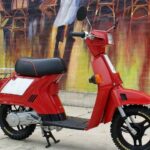
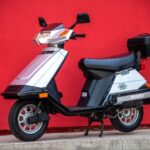
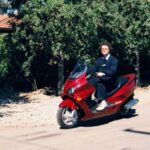


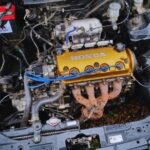
![Read more about the article Honda Reliability – Are Hondas Reliable? [Civic, Accord, Fit and more]](https://roadsumo.com/wp-content/uploads/2020/12/are-hondas-reliable-300x200.jpg)
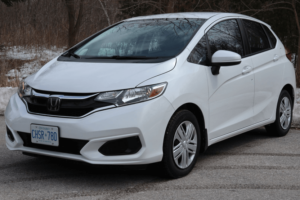
![Read more about the article How Long Do Hondas Last? [Civics, Accords, CRVs, and more]](https://roadsumo.com/wp-content/uploads/2020/11/how-many-miles-can-a-Honda-CRV-last-300x200.jpg)